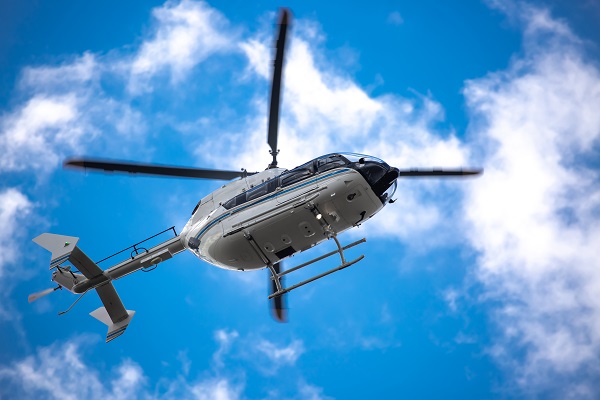The Top Trucking Inspection Fails of 2024

Semi-trucks are the backbone of America’s supply chain; they move goods across thousands of miles daily. However, their massive size and weight make them dangerous when operators disregard safety rules. Truck drivers and trucking companies carry a heavy responsibility to follow safety laws and best practices. When they fail, the consequences can be devastating for everyone on the road. That includes the risk of serious and potentially fatal truck accidents.
In 2024, state and local enforcement agencies revealed some of the most outrageous trucking violations. These violations are examples of the risks of cutting corners and the lives at stake when truck drivers and their employers ignore safety laws.
What are some of the most shocking truck inspection fails of 2024?
In California, the California Highway Patrol (CHP) uncovered shocking safety violations throughout the year, including:
- A truck rolling on its rim: In December, CHP stopped a truck driving without a tire, leaving the rim grinding against the pavement. Surprisingly, the driver remained unaware until reaching a CHP facility. This incident could have led to catastrophic failure or loss of control.
- Speeding above the limit: CHP also cited a driver speeding far above California’s 55 mph limit for large trucks. This excessive speed reduces a truck’s ability to stop quickly and increases the risk of a roadway catastrophe.
In Iowa, the Iowa State Patrol (ISP) also encountered shocking violations that demonstrate the trucking industry’s safety challenges:
- Tires pointing in different directions: Officers stopped a truck with tires not only flat but also misaligned, pointing in opposite directions. The trailer lights didn’t work either. The driver, shockingly, had no idea of the dangers they posed.
- Broken trailer frame: One truck’s uneven stance revealed a snapped trailer frame. Despite the visible defect, the driver continued operating the vehicle.
- Driving after a low-bridge strike: Another driver hit a low bridge, causing severe trailer damage. However, he kept going as though nothing had happened, which could have caused debris to fall onto the road.
- Drunk driving: In one of the most outrageous incidents, the ISP stopped a commercial driver drinking hard liquor behind the wheel. The driver’s blood alcohol content level was nearly five times the legal limit for commercial vehicles.
- Unregistered truck with oversized freight: ISP officers also stopped a truck carrying oversized freight without permits, insurance, or registration. The vehicle had not been registered in 16 years and showed clear signs of neglect.
What safety obligations do truck drivers and trucking companies have?
Truck drivers and their employers must comply with strict state and federal safety regulations. These rules exist to prevent truck accidents that can have life-altering consequences. Here’s what responsible operators must do to ensure highway safety:
1. Limit driving hours to prevent fatigue
Fatigue remains one of the leading causes of truck accidents. Federal Hours of Service (HOS) rules are in place to reduce this risk by limiting how long drivers can stay on the road. Truck drivers must take at least 10 consecutive off-duty hours before starting a shift. They can’t drive more than 11 hours within a 14-hour work window. After eight hours of driving, they must take a 30-minute break. When trucking companies push unrealistic delivery schedules, drivers may feel pressured to ignore these rules, which only increases the risk of deadly fatigue-related crashes.
2. Inspect vehicles before and after trips
Pre-trip and post-trip inspections help catch mechanical issues before they cause problems on the road. The Federal Motor Carrier Safety Administration (FMCSA) requires drivers to inspect brakes, tires, lights, and other key components. Skipping inspections or ignoring reported issues can lead to catastrophic equipment failures.
Daily inspections must check for:
- Tire pressure and tread wear
- Brake functionality
- Working headlights, turn signals, and reflectors
- Secure trailer connections
3. Maintain accurate records and perform timely repairs
Trucking companies must maintain their fleets to prevent mechanical breakdowns. Neglecting repairs to save money risks tire blowouts, brake failures, and other preventable hazards. Proper maintenance ensures vehicles remain roadworthy and compliant. FMCSA guidelines require companies to:
- Schedule regular maintenance
- Log repairs and inspections accurately
- Immediately address flagged issues
4. Secure cargo correctly
Improperly loaded cargo can shift during transit. This can lead to rollovers, jackknifes, or debris spills. Federal regulations require freight to be evenly distributed and secured using appropriate straps or chains. Overloading a truck or failing to secure cargo increases the likelihood of instability, especially during sudden maneuvers or sharp turns. These avoidable mistakes often result in truck accidents involving multiple vehicles.
5. Hire and train qualified drivers
Operating an 80,000-pound semi-truck demands specialized training and certification. Hiring untrained or unqualified drivers introduces unnecessary risks. Ongoing training also helps experienced drivers stay up-to-date on safety practices. To meet this requirement, trucking companies must ensure drivers:
- Obtain a valid Commercial Driver’s License (CDL).
- Complete training programs covering road safety and vehicle operation.
- Pass physical fitness exams to confirm they’re fit for long-haul trips.
6. Monitor and address unsafe driver behavior
Trucking companies must actively monitor their drivers for risky behaviors, such as speeding, hard braking, or distracted driving. Telematics systems can flag these issues in real-time. This gives companies a chance to correct unsafe habits before they result in serious collisions.
Hurt in a Texas truck accident? Our Houston lawyers are here to help
When truck drivers or trucking companies ignore safety regulations, the consequences can be severe. Victims can end up with devastating injuries, costly medical bills, and uncertainty about the future. If you’ve been injured in a Texas truck accident, the Houston attorneys at Smith & Hassler are here to fight for the compensation you deserve. Some of our most notable truck accident case results include:
- $1.38 million for two clients involved in an 18-wheeler collision, both suffering mild traumatic brain injuries, with one also sustaining multiple fractured bones.
- $175,000 for a client who suffered a back injury in a crash with a large truck.
- $137,000 for a client who suffered a herniated lumbar disc after being rear-ended by a big rig.
Our law firm can provide dedicated legal support by listening to your story, thoroughly investigating your case to uncover negligence, and dealing with insurance companies while you focus on recovery. We understand the financial challenges a truck accident brings, so we work on a contingency fee basis—you pay nothing unless we win your case.
Start with a free, no-obligation consultation where we’ll review your case, discuss your options, and answer your questions. Don’t wait — contact us today to take the first step toward the justice you deserve.
“Smith and Hassler represented us in an injury case. They secured a settlement for us that was bigger than we ever thought possible.” – NG, ⭐⭐⭐⭐⭐







 The future of cycling safety in Houston hinges on fully funding and implementing the city’s bike plan, making it vital that elected officials keep their promises and voters hold them accountable.
The future of cycling safety in Houston hinges on fully funding and implementing the city’s bike plan, making it vital that elected officials keep their promises and voters hold them accountable.